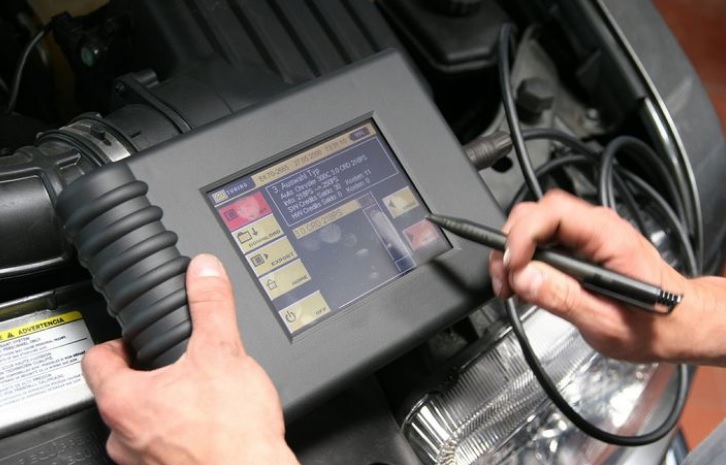Vehicle parts are no longer only made up of metals and plastics, they now include sophisticated electronics, cameras, and sensors.
Vehicles today are computers on wheels. With about 100 million lines of code, that’s more than twice that of an F-35 fighter jet or the Large Hadron Collider, the largest energy particle collider and the largest machine in the world.
Advanced Driver Assistance Systems (ADAS) are responsible for an increasing percentage of that code. Technologies such as blind spot detection, forward collision warning, and adaptive cruise control are now available on mainstream models. Soon they won’t even be an option, as 20 automakers have committed to making automatic emergency braking (AEB) standard on virtually all their models by Sept. 1, 2022.
As such, vehicle parts are no longer only made up of metals and plastics, they now include sophisticated electronics, cameras, and sensors. Replacing a windshield, repairing a bumper, performing a front-end alignment, or merely a loss of voltage or disconnection of electrical circuits could necessitate ADAS recalibration. These systems must be repaired to ensure they return to OEM-certified working order. The fact that the technology isn’t readily visible to the naked eye makes it more complicated.
Data from Mitchell, a major provider of collision repair diagnostics, shows that average repair costs grew from $2,904 in the third quarter of 2016 to $3,413 in the fourth quarter of 2019. (Insurance claims across this period show even greater increases.) Meanwhile, scanning and calibration frequencies have both jumped even more dramatically.
The repair industry, already saddled with a shortage of automotive service technicians, has not yet caught up with the rate of ADAS penetration. A 2019 survey by the Equipment and Tool Institute (ETI) found that 62% of new car dealers responded that they are equipped to handle ADAS diagnosis, repairs, and recalibrations, while only 26% of independent repair shops said they were equipped.
Certainly, fleet operators have a lot more than just bigger repair bills to worry about: An improperly repaired sensor on an AEB system could fail to judge the distance to a vehicle in front of it, causing a crash that results in injuries, deaths, and massive financial liabilities. What should you do?
Fleet operators of all shapes and sizes need to formulate an ADAS game plan.
The plan starts when you spec your fleet by understanding the ADAS on each model. With increasing proliferation, this might be easy to miss. After identifying your vehicles’ ADAS technologies, you must make sure that your repair facility — whether in-house or outsourced — has the training and equipment to handle ADAS.
It’s time to double down on technicians’ education. Do they meet current OEM and I-CAR (Inter-Industry Conference on Auto Collision Repair) training and certifications?
All major auto manufacturers now have position statements on their vehicles’ requirements for ADAS recalibrations and repairs. Access them and understand them, then confer with your technicians on the details.
For instance, both Ford and General Motors require a pre-repair diagnostic scan during the assessment phase of collision service as well as a diagnostic scan after the repairs are completed. This is to not only verify the repairs were made correctly, but also ensure that new faults have not been introduced during repairs.
You must also ensure that your technicians have the right tools to recalibrate ADAS, as the great majority of scan tools aren’t equipped to properly handle ADAS in vehicles from 2019 and 2020 model years, just as ADAS proliferation spiked. Of course, the newer the vehicle, the higher the complexity.
Owing to the newness of the technology, case law involving ADAS has not produced any clear precedents. Yet lawsuits regarding collisions in which a repair deviated from an OEM’s specifications have yielded enormous damage awards. It’s not a stretch to make the same connection with the mishandling of ADAS repair and recalibrations.
Certainly, more ADAS is good for all of us: A study by AAA estimates that ADAS technologies have the potential to prevent a combined total of about 40% of all passenger vehicle crashes.
Yet ADAS can’t prevent all crashes. The need to scan and recalibrate systems will increase, just as skilled labor, equipment, and training costs continue to increase as well. Fleet operators will look to mitigate these financial burdens — but can’t do so by cutting corners on ADAS recalibration and repairs.
Executive Editor
Source: https://www.businessfleet.com
CUT COTS OF THE FLEET WITH OUR AUDIT PROGRAM
The audit is a key tool to know the overall status and provide the analysis, the assessment, the advice, the suggestions and the actions to take in order to cut costs and increase the efficiency and efficacy of the fleet. We propose the following fleet management audit.





